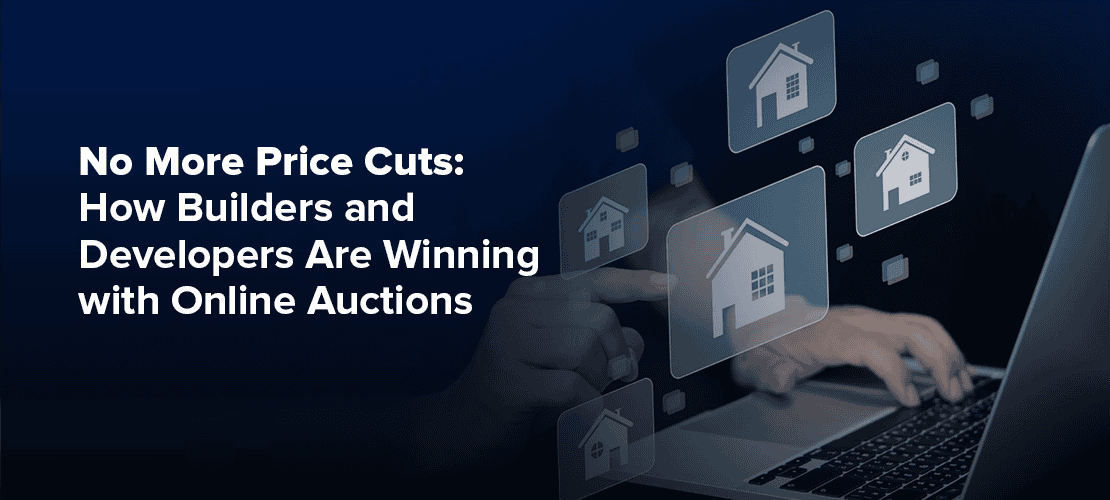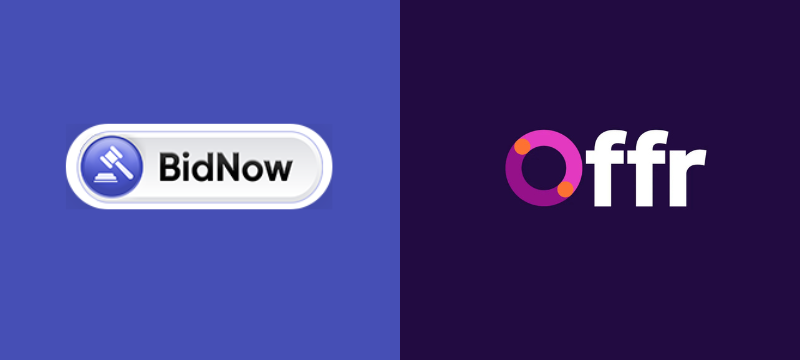No More Price Cuts: How Builders and Developers Are Winning with Online Auctions

- By BidHom Team
-
 Published on April 21, 2025
Published on April 21, 2025
 7 minutes read
7 minutes read
Builders and developers don’t have it easy. You’re dealing with rising material costs, labor shortages, tighter lending, and a market where buyers are either over-informed or under-committed. And let’s not even get started on the unsold inventory quietly bleeding money in the background.
Traditional sales cycles aren’t just outdated—they’re inefficient. They stretch timelines, stall cash flow, and force you into reactive decision-making. And while listings portals may offer visibility, they don’t offer velocity.
This is where online real estate auctions come in—and why platforms like BidHom are becoming a natural fit for developers who need more control, speed, and reach.
Let’s unpack the real property auction benefits for developers and builders—and why it’s more than just a sales tactic.
The Real Pain Points for Builders & Developers
Before we get into solutions, let’s call out the actual challenges.
1. Slow, Unpredictable Sales Cycles
You finish construction and expect the units to sell within a projected timeline. But even if you’ve priced reasonably and staged it well, there’s no guarantee the market will cooperate. It’s not uncommon for properties to sit for 6–12 months post-launch. Meanwhile, you’re incurring holding costs—property taxes, interest on borrowed capital, security, maintenance. It adds up. Fast.
According to NAHB, the average cost to hold a newly built home is roughly 1.5% of its value per month in carrying costs. That’s significant.
2. Narrow Buyer Pools
Even great projects can stall if your buyer visibility is limited. Most developers rely on local agents, MLS platforms, or syndicated portals to push listings out. But these aren’t optimized for creating urgency or competition. You end up talking to the same group of buyers, again and again, with decreasing enthusiasm.
3. Tense Price Negotiations
Developers know this dance. You set a price, buyers lowball, agents “recommend patience,” and weeks later you’re shaving 5–10% off, just to move inventory. The longer a unit sits, the more negotiable you become. It’s not about value—it’s about fatigue.
4. Stretched Resources
Your marketing teams are split across channels. Sales teams are juggling multiple listings. And with every delay, you’re stretching resources thinner—time, budget, and bandwidth. There’s little space left to focus on the next phase of your development cycle.
Why Online Launching Online Property Auctions Just Make Sense
Online auctions flip the script. You don’t wait for the right buyer to show up—you invite all of them to compete at once.
1. Speed and Finality
Unlike open-ended listings, auctions operate on deadlines. A 7–14-day auction cycle creates urgency. Buyers have a defined window to act or lose out. For builders, this means tighter timelines, faster decisions, and quicker access to liquidity.
Platforms like BidHom offer a clean, integrated auction module that lets you schedule and run auctions directly within your listing dashboard—no third-party tools, no separate workflows.
2. Transparent Bidding, Market-Driven Pricing
One of the biggest friction points in traditional sales is price negotiation. Auctions remove the ambiguity. Buyers place visible, escalating bids. There’s no backroom discounting. No long-drawn-out agent conversations. Just real-time price discovery.
For developers, this visibility helps reset how pricing is perceived. You’re no longer the one defending a number—the market defines it.
3. Expanded Buyer Reach
This is where online auctions show real strength. When you run a listing as an auction on a platform like BidHom, it doesn’t just sit in a static marketplace. It’s promoted to an active network of engaged buyers, with marketing tools to push reach beyond local limits.
Combined with targeted digital campaigns and social amplification, BidHom’s online auction model ensures your property gets exposure to not just local end-users but also investor groups and cross-border interest.
Where BidHom Fits In: Purpose-Built for Builders
BidHom isn’t just another listing website with an auction plugin. It’s built with the specific needs of builders and developers in mind.
Here’s how BidHom lines up with your operational realities:
1. Centralized Auction & Listing Dashboard
You can manage traditional listings and auctions in one place—switching seamlessly between formats depending on inventory status, market interest, or urgency. This flexibility is crucial for developers who want to test-market certain units via auction while keeping others open for direct sale.
2. Pre-Auction Marketing Tools
Unlike passive platforms that wait for traffic, BidHom supports pre-auction campaigns, giving you tools to run buzz-generation campaigns before the bidding starts. From email marketing templates to built-in CRM tools for lead tracking, it helps builders build momentum in the days before launch.
3. Control Over Auction Mechanics
Set a reserve price. Define starting bids. Choose auction timelines. With BidHom, you’re not surrendering control—you’re streamlining the sales process with structure. It’s ideal for developers launching multiple units where they want to test different pricing strategies across phases.
4. Bulk Uploads & Project Listings
Selling 1 unit or 30? BidHom supports bulk property uploads with templates built for project developers. You can group units, highlight amenities, and even stagger auction launch dates to create a sales funnel across phases.
5. Reporting That Actually Helps
BidHom gives you access to real-time auction analytics, user interest metrics, and bid history. This isn’t vanity data—it helps developers understand pricing floors, user behavior, and which listings are performing better than others.
Online Real Estate Auctions: Not a Trend, a Shift
To be clear—auctions aren’t a backup plan for distressed sales. Not anymore. They’re a go-to-market strategy that works across asset classes—from single homes to entire projects.
In fact, according to Redfin, homes sold via online auction close 30–50% faster on average compared to traditional methods. Another study by ATTOM Data shows that auctioned homes can generate up to 10% higher sale prices in competitive markets.
For developers with inventory to move, every percentage point matters. Every week saved impacts cash flow. And every unit sold unlocks capital for your next move.
How Builders Can Launch Their First Auction on BidHom
You don’t need to overhaul your sales ops to get started. Here’s how developers typically launch:
- Identify Inventory: Start with slow-moving or spotlight units. Set realistic reserve prices.
- Upload Listings: Use BidHom’s bulk listing template or create individual auctions.
- Run Pre-Auction Marketing: Use email, social, and digital campaigns to build awareness.
- Launch the Auction: Set timelines (7–14 days), define starting bids, and let BidHom handle the backend.
- Monitor & Close: Track real-time bids, get instant notifications, and complete the transaction within days.
You can even run auctions as white-label experiences with your brand front and center—ideal for developers managing gated communities or premium units.
Final Word
The question isn’t why auction? —it’s why not now?
In a market where holding costs, sales delays, and buyer fatigue are all too common, launching online real estate auctions offers a cleaner, faster, smarter way to sell. And platforms like BidHom make that shift not just possible, but practical.
For builders and developers who want control over sales timelines, clarity on pricing, and access to a wider buyer base, BidHom isn’t just a tool—it’s a strategy.
The next cycle of real estate innovation won’t be built on waiting. It’ll be built on action. And it starts with platforms that work for the people building things.
Get a quote for BidHom’s enterprise platform now.



Share Article